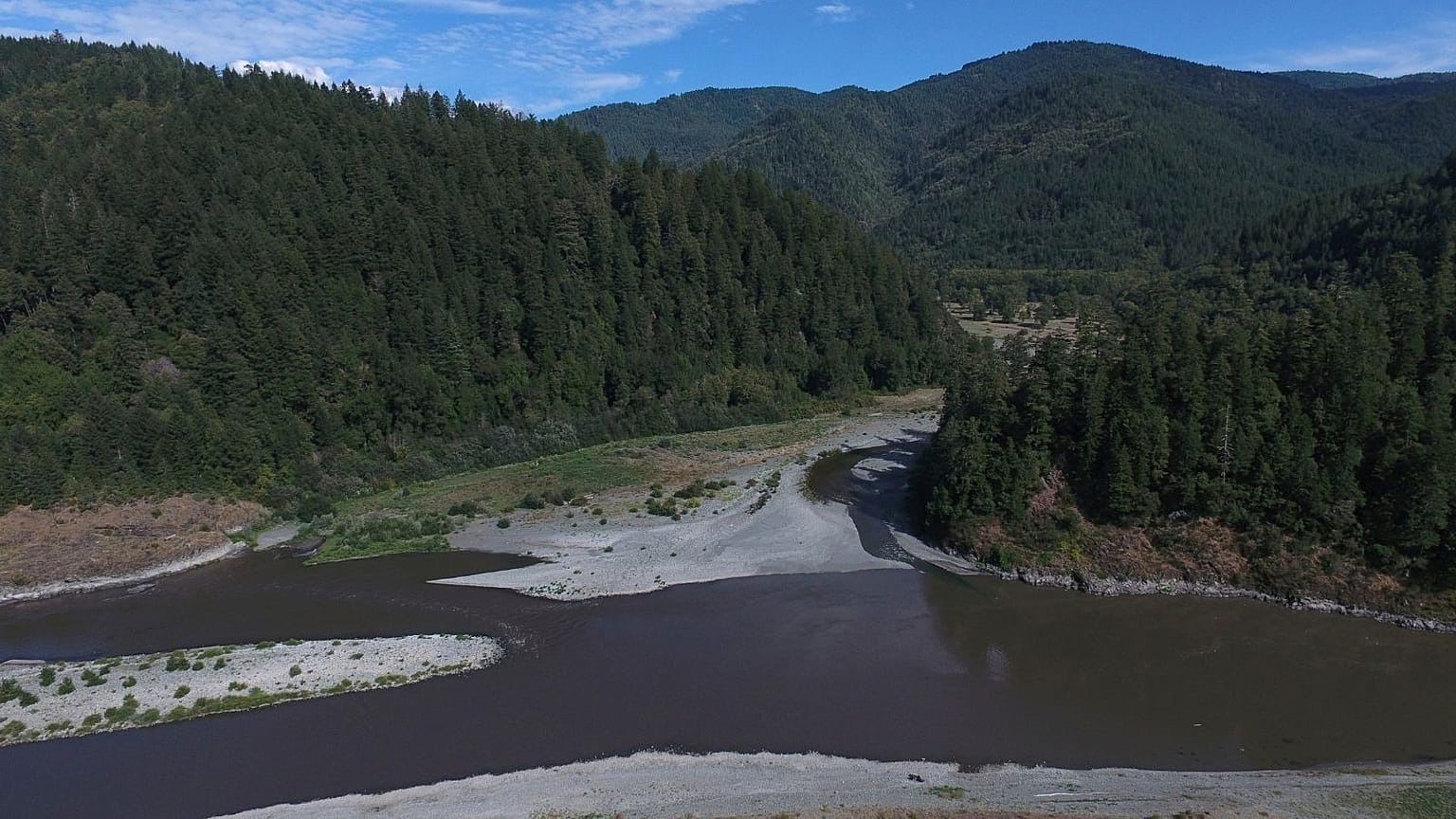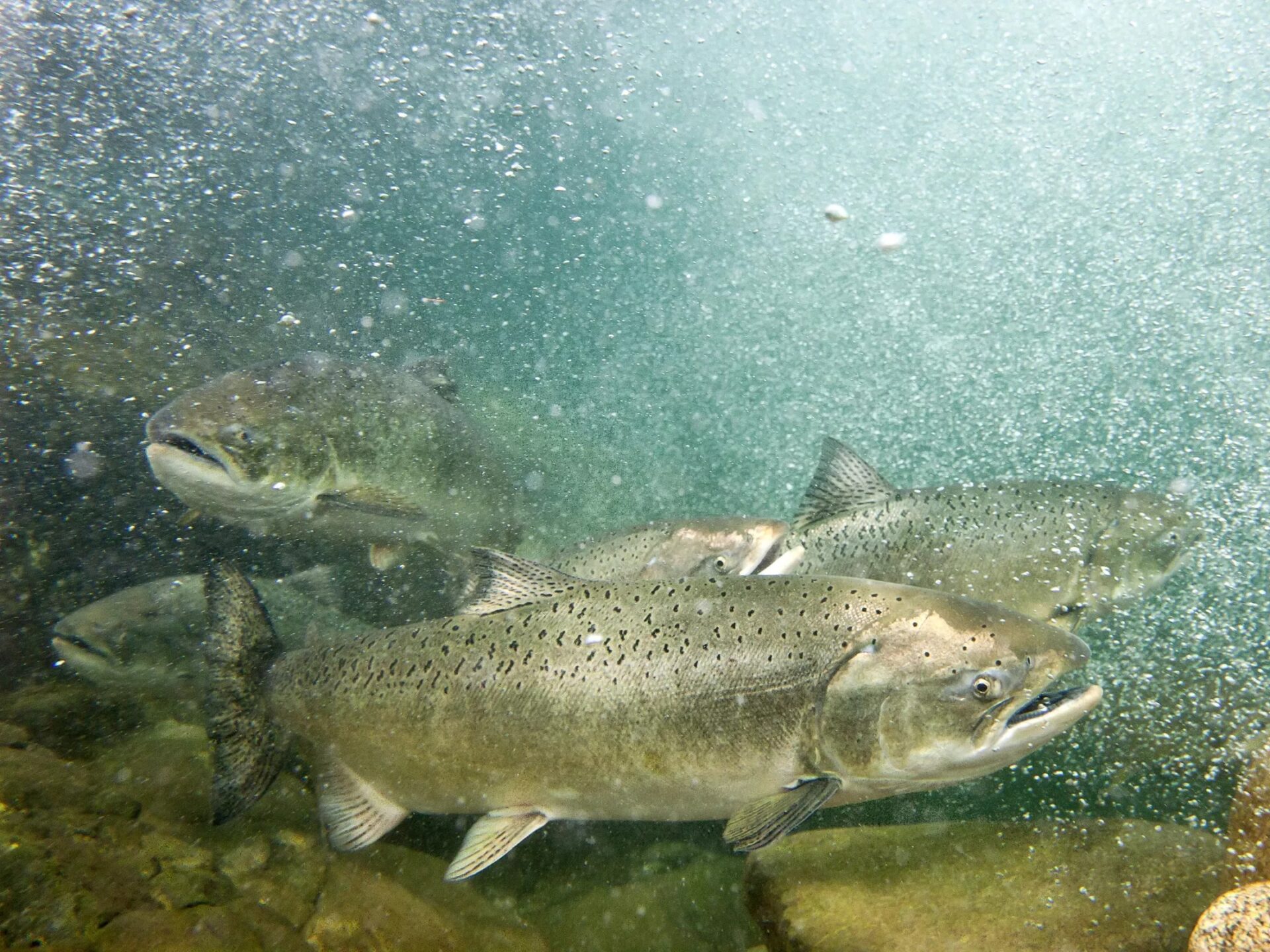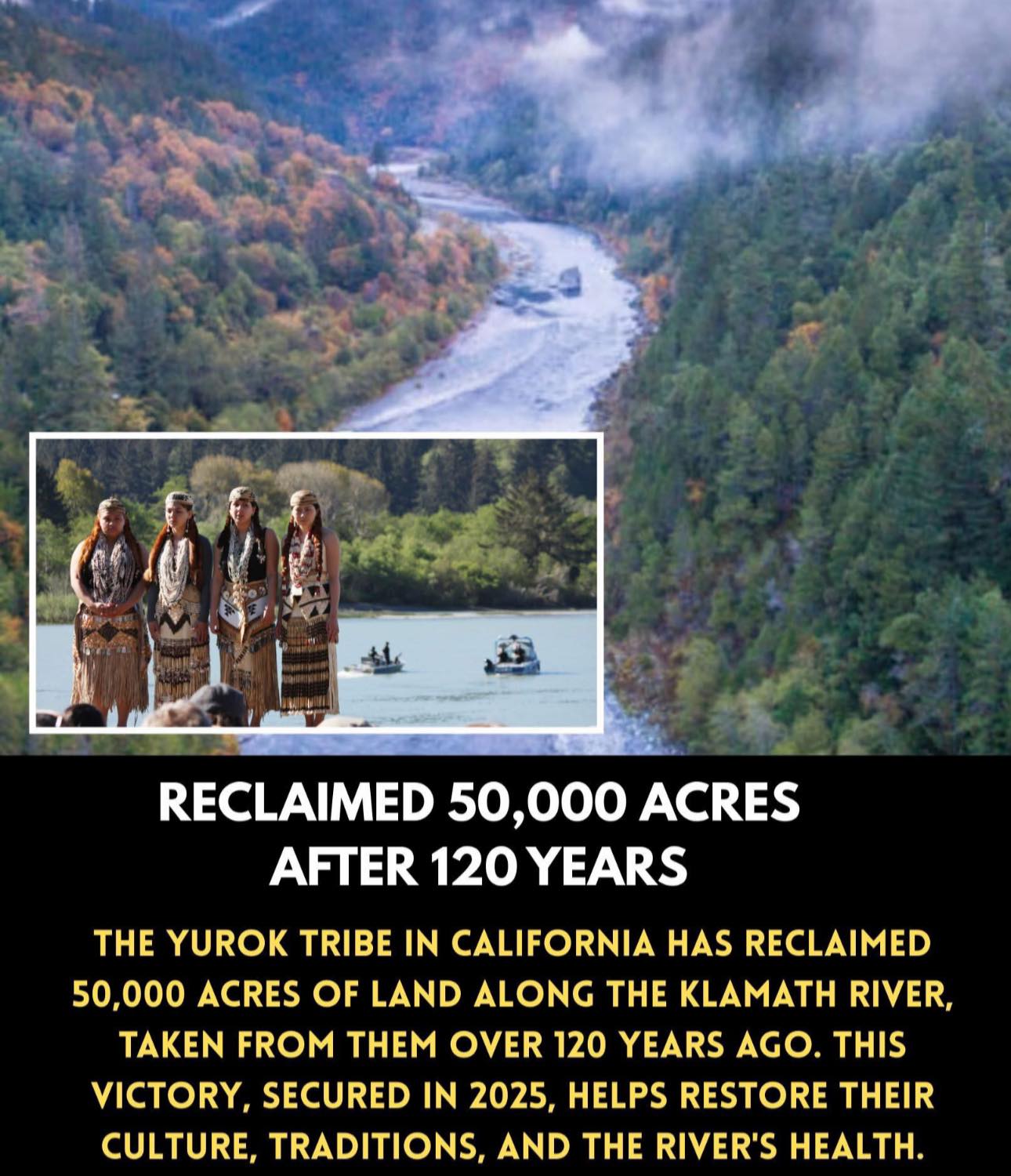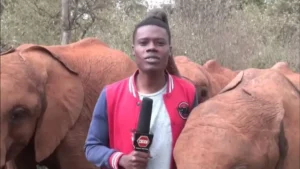In a historic victory for Indigenous sovereignty, the Yurok Tribe of California has successfully reclaimed over 47,000 acres of ancestral land, marking the largest “land back” transaction in the state’s history. This landmark achievement is not just a reclaiming of territory, but a significant step toward ecological restoration, cultural renewal, and justice for past land theft. The transaction was finalized in 2025 after 23 years of relentless advocacy, partnerships, and perseverance.

A Powerful Step for Sovereignty and Conservation
The Yurok Tribe’s reclamation of the land along the Klamath River has been hailed as a monumental event for Indigenous rights. The newly restored land includes the Blue Creek Salmon Sanctuary and the Yurok Tribal Community Forest, spanning 25 miles of the Klamath River’s eastern bank and the entire lower watershed of Blue Creek. This territory holds immense cultural and spiritual significance for the Yurok people, who have called it home for thousands of years.
Historically, the land was taken during the California Gold Rush in the late 1800s, leading to violent displacement of the Yurok Tribe and the loss of over 90% of their ancestral homeland. The territory was subsequently managed as industrial timberland, leading to severe ecological damage, including the destruction of vital salmon habitats, which severely impacted the tribe’s way of life. The Yurok people have been working for decades to undo this damage, and this reclamation is a major milestone in their journey toward ecological and cultural restoration.
The Struggle for Land: A 23-Year Journey
The process of reclaiming the land began in 2009 through a partnership between the Yurok Tribe and the Western Rivers Conservancy (WRC). Over the years, WRC worked to acquire parcels of the land from the Green Diamond Resource Company, and the effort culminated in a $56 million acquisition. This victory was made possible through various innovative funding mechanisms, including private philanthropy, low-interest loans, federal tax credits, and carbon credit sales. These funds will continue to support the tribe’s restoration efforts in the years to come.
Joseph James, chairman of the Yurok Tribal Council, expressed the tribe’s overwhelming joy at the victory: “No words can describe how we feel knowing that our land is coming back to the ownership of the Yurok people. The Klamath River is our highway. It is also our food source. And it takes care of us. And so it’s our job, our inherent right, to take care of the Klamath Basin and its river.”
Ecological Restoration and Cultural Renewal
With the return of this land, the Yurok Tribe is now focused on restoring both the land and the river. The tribe has outlined a comprehensive plan to heal the territory using traditional ecological knowledge combined with modern scientific methods. Key efforts include:
- Controlled Fire: Reintroducing prescribed burns to restore biodiversity, improve soil health, and reduce wildfire risks.
- Habitat Restoration: Replanting native species, removing invasive plants, and reviving historic prairies to support wildlife such as elk, deer, and medicinal plants.
- River Healing: Removing old logging roads, repairing culverts, and placing fallen trees in streams to rebuild salmon and steelhead habitats.

These restoration efforts will play a crucial role in reviving the Klamath River ecosystem, which has been deeply affected by the previous land management practices. Moreover, this victory aligns with the ongoing removal of four dams on the Klamath River—the largest dam removal project in U.S. history. Together, these efforts mark a turning point in river restoration and salmon recovery.
A Model for the Future: Empowering Indigenous Communities
The Yurok Tribe’s “land back” victory serves as a model for other Indigenous communities seeking to reclaim their ancestral lands. The tribe’s success demonstrates the power of collaboration, perseverance, and innovative financing in achieving land restoration and cultural revival. It also highlights the importance of Indigenous stewardship in maintaining healthy ecosystems.
By restoring their ancestral lands, the Yurok Tribe is not only preserving their cultural heritage but also contributing to broader environmental conservation efforts. Their work serves as an inspiration for future generations of Indigenous leaders and activists who are fighting for environmental justice, land sovereignty, and cultural revitalization.
Conclusion: A Step Toward a More Just Future
The Yurok Tribe’s achievement in reclaiming 47,000 acres of ancestral land is more than just a victory for the tribe—it is a triumph for Indigenous sovereignty, environmental conservation, and justice. As the Yurok people continue their efforts to restore their land and river, they are laying the foundation for a more resilient and sustainable future. This victory stands as a powerful reminder that, through dedication and collaboration, communities can heal the land and preserve their cultural heritage for future generations.
For more inspiring stories, read about how Man Loses 360 Pounds Naturally: Internet Rallies to Support His Next Step or Tammy Hembrow’s Bikini Photos Are Stirring Controversy: Here’s Why Everyone’s Talking.



